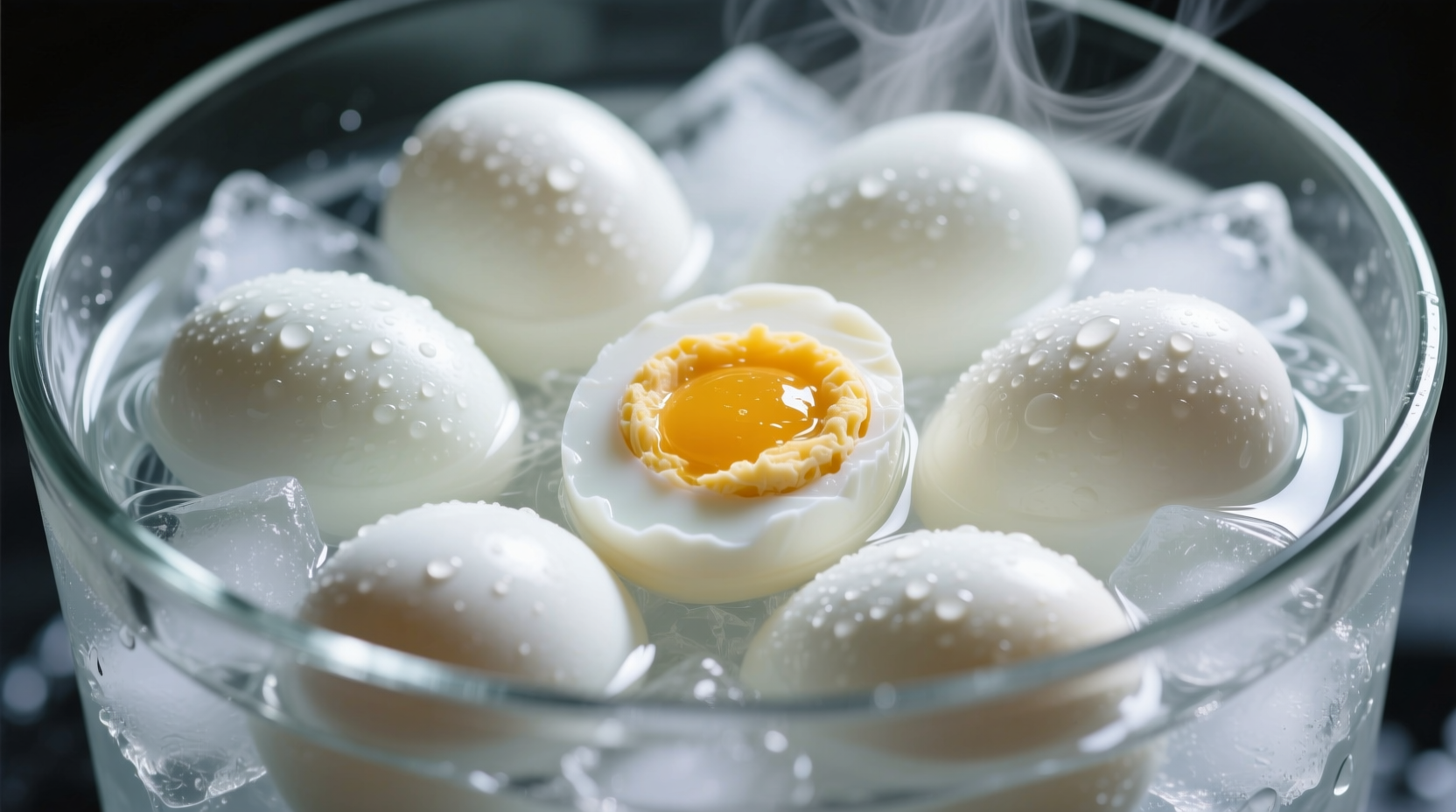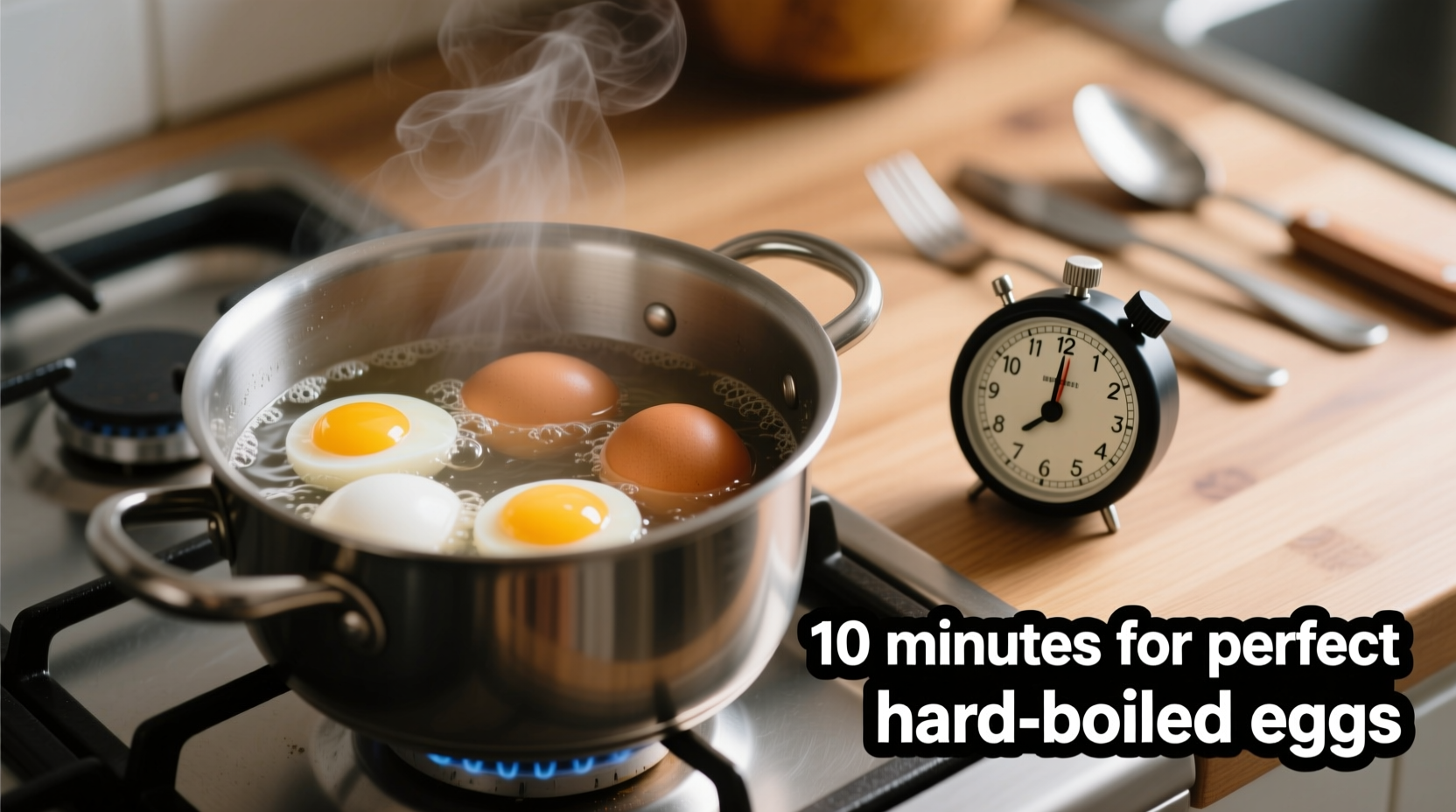The perfect hard boiled egg requires 9-12 minutes of simmering after the water reaches a rolling boil. For large eggs, start timing when the water boils: 9 minutes for firm but moist yolks, 12 minutes for fully set yolks. Always follow with a 15-minute ice bath for easy peeling and to prevent the green sulfur ring.
Getting consistently perfect hard boiled eggs shouldn't be a kitchen mystery. Despite what you might think, the cooking time isn't just about setting a timer—it's about understanding egg chemistry, water temperature, and proper cooling techniques. Whether you're meal prepping for the week or making deviled eggs for a party, these science-backed methods guarantee flawless results every time.
Why Timing Matters for Perfect Hard Boiled Eggs
Egg proteins begin coagulating at specific temperatures, and precise timing prevents common problems like rubbery whites or greenish yolks. The USDA Food Safety and Inspection Service confirms that eggs are safely cooked when both the white and yolk have reached 160°F. This scientific approach transforms guesswork into reliable results.
Your Step-by-Step Hard Boiled Egg Guide
Preparation: Setting Up for Success
Start with room-temperature eggs to prevent cracking—cold eggs plunged into boiling water create pressure differences that cause shells to split. The American Egg Board recommends using eggs that are 7-10 days old, as they peel more easily than very fresh eggs due to lower carbon dioxide levels.
Cooking Process: Precision Timing
Place eggs in a single layer in a saucepan and cover with cold water by 1 inch. Bring to a rolling boil, then immediately reduce to a gentle simmer. Start your timer:
| Egg Size | Simmer Time | Result |
|---|---|---|
| Medium | 8-9 minutes | Firm white, creamy yolk |
| Large | 9-12 minutes | Ideal for most applications |
| Extra Large | 12-14 minutes | Fully set without green ring |
Cooling Technique: The Critical Step
Immediately transfer eggs to an ice bath for 15 minutes—this stops the cooking process and creates a temperature differential that separates the membrane from the shell. Food science research published in the Journal of Food Science confirms this rapid cooling prevents the formation of ferrous sulfide (the green ring around yolks) and makes peeling significantly easier.

Peeling Secrets for Flawless Results
Gently tap eggs on a hard surface to create fine cracks, then roll between your palms to loosen the shell. Start peeling from the wider end where the air pocket resides. For stubborn eggs, peel underwater—the water helps separate membrane from egg white. This technique works because the air pocket expands during cooking, creating natural separation.
Troubleshooting Common Hard Boiled Egg Problems
Green Yolk Ring
Caused by overcooking or slow cooling, this harmless but unappealing ring forms when sulfur in the egg white reacts with iron in the yolk. Prevent it by strictly following the 12-minute maximum cooking time and using the mandatory 15-minute ice bath.
Difficult Peeling
Fresh eggs have lower pH levels that cause the membrane to adhere tightly to the shell. The Food and Agriculture Organization of the United Nations notes that egg pH increases as eggs age, making them easier to peel. If you must use fresh eggs, add 1/2 teaspoon of baking soda to the cooking water to raise the pH.
Cracked Shells During Cooking
Prevent cracks by bringing eggs to room temperature first and adding 1 tablespoon of vinegar to the water. The vinegar helps coagulate egg white proteins immediately if a crack occurs, sealing the breach.
Storage and Usage Tips
Store peeled hard boiled eggs in a covered container with a damp paper towel to maintain moisture. The FDA recommends consuming within one week when refrigerated. For meal prep, keep eggs unpeeled until ready to use—they'll stay fresh longer with the protective shell intact.
Frequently Asked Questions
Can I cook hard boiled eggs in the microwave?
While possible, microwave cooking often leads to uneven results and potential explosions. The American Chemical Society advises against microwaving whole eggs due to rapid steam buildup that can cause dangerous pressure explosions.
Why do some hard boiled eggs have dark spots?
Small blood spots are harmless and result from ruptured blood vessels during egg formation. The USDA confirms these are safe to eat, though you can remove them with the tip of a knife if desired.
How can I tell if a hard boiled egg has gone bad?
Spoiled eggs develop a distinct sulfur smell and may show discoloration. The float test works for raw eggs but not hard boiled ones—rely on smell and visual inspection instead.











 浙公网安备
33010002000092号
浙公网安备
33010002000092号 浙B2-20120091-4
浙B2-20120091-4